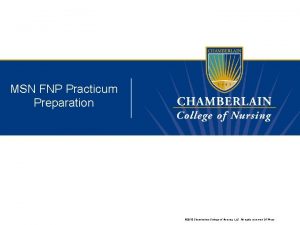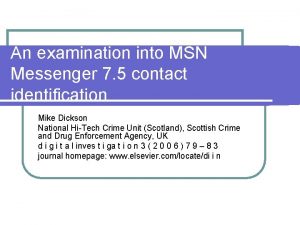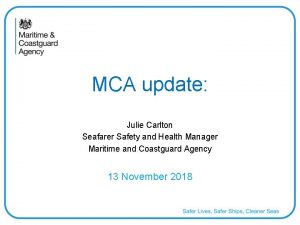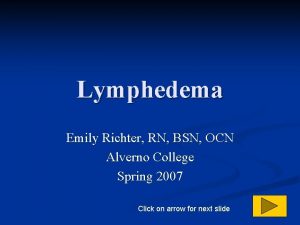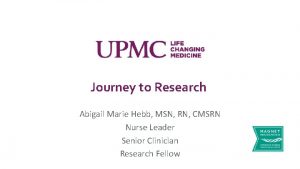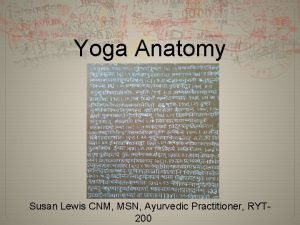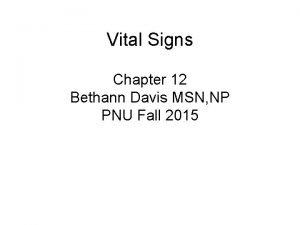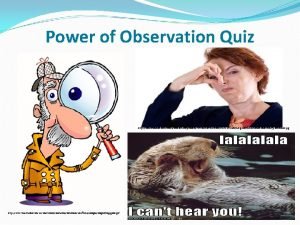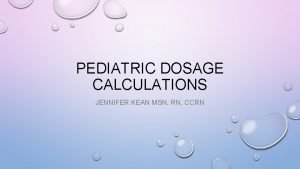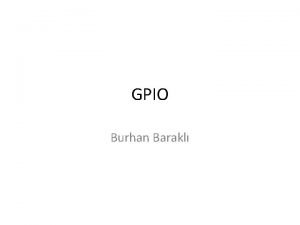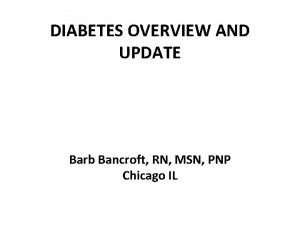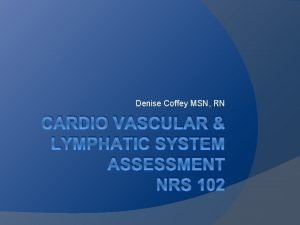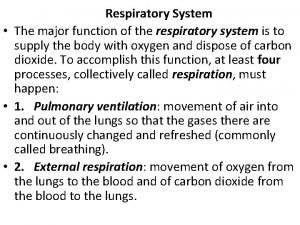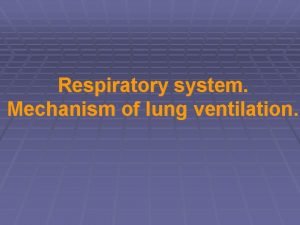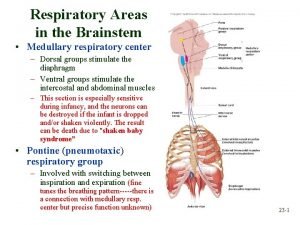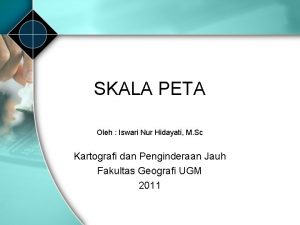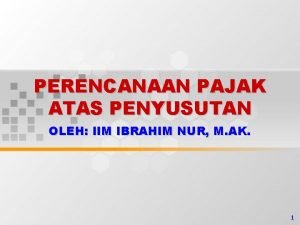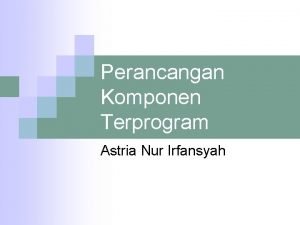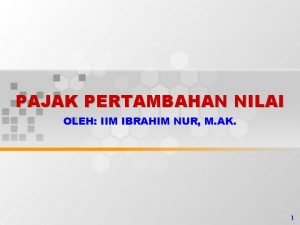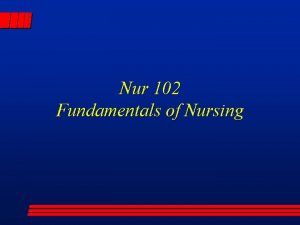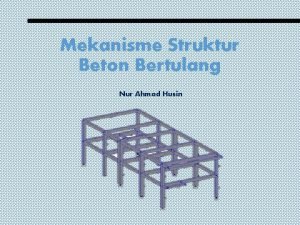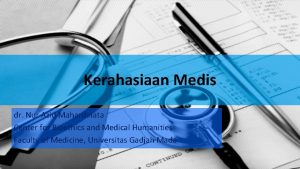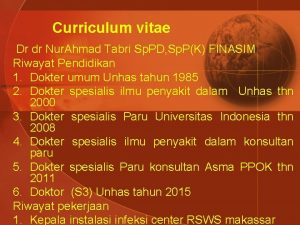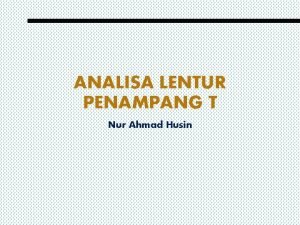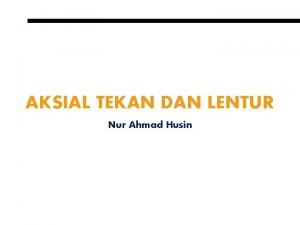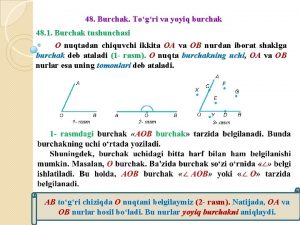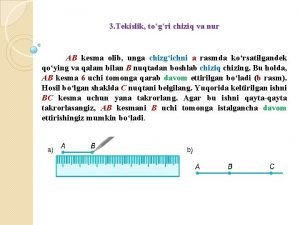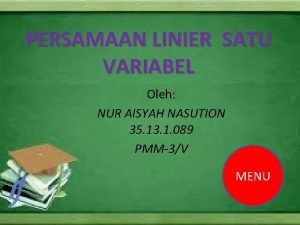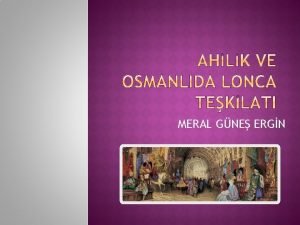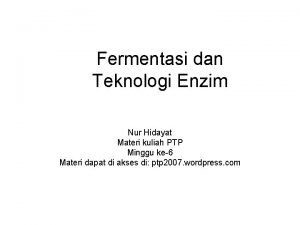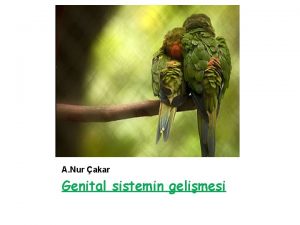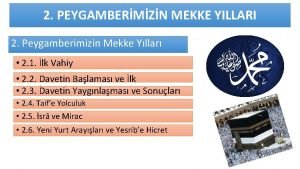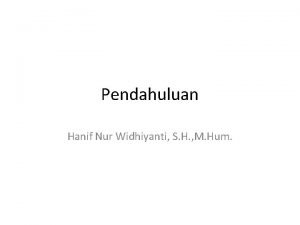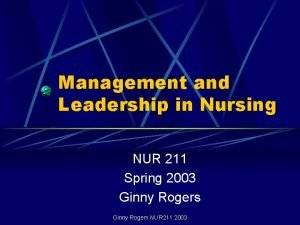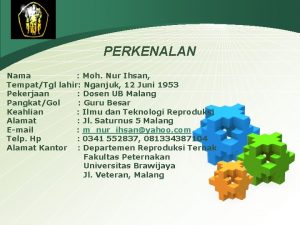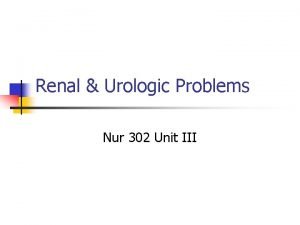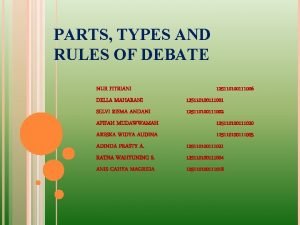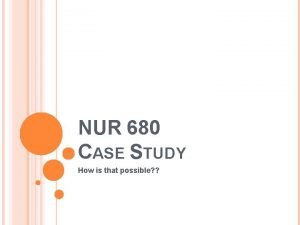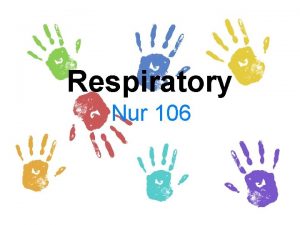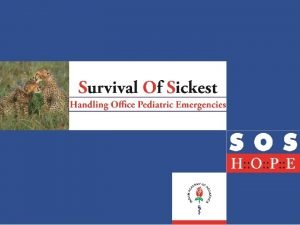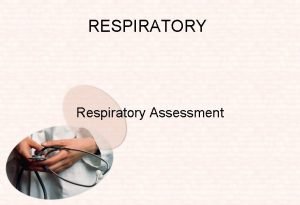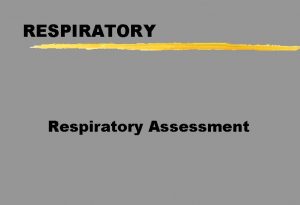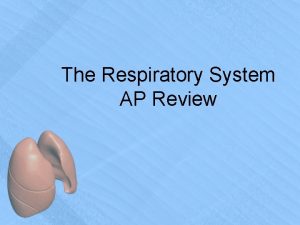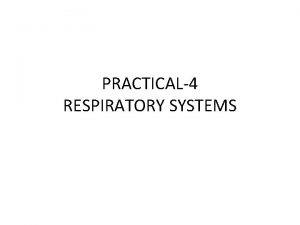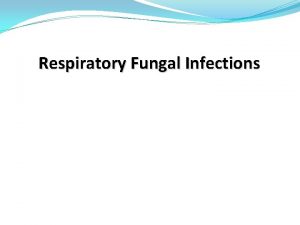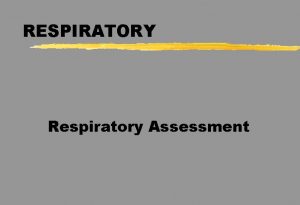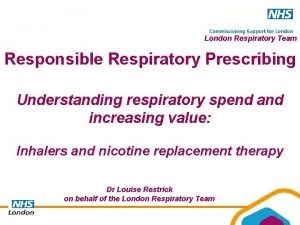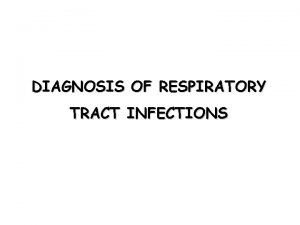RESPIRATORY FUNCTION Stacie Pigues MSN RN NWCC NUR








































































- Slides: 72

RESPIRATORY FUNCTION Stacie Pigues, MSN, RN NWCC NUR 1117 Foundations of Nursing

STRUCTURES OF THE RESPIRATORY SYSTEM

STRUCTURES OF THE RESPIRATORY SYSTEM Upper Airway: – Mouth – Nose – Pharynx

STRUCTURES OF THE RESPIRATORY SYSTEM Lower Airway: – Trachea – Bronchioles – Alveoli – Lungs

NORMAL RESPIRATORY FUNCTION – – – Ventilation Gas diffusion Gas transport Control of ventilation Defenses of the respiratory system Normal breathing pattern

NORMAL RESPIRATORY FUNCTION • Ventilation, or breathing, is the process of moving air into and out of the lungs so that gas exchange can take place. • Gas Diffusion refers to the movement of oxygen between the alveoli and the blood.

GAS DIFFUSION p. 736

NORMAL RESPIRATORY FUNCTION • Gas Transport occurs when oxygen crosses the alveolar-capillary membrane into the blood where blood transports it to the tissues. • Control of Ventilation, this process is controlled through neural pathways.

DEFENSES OF THE RESPIRATORY SYSTEM Upper Airway functions to: • Warm and humidify inspired air while maintaining the fluid character of the lower airway • Clean inspired air • Protect lower airway from infection and injury due to aspiration

DEFENSES OF THE RESPIRATORY SYSTEM Lower Airway functions to: • Further clean inspired air • “Mucus Blanket” –protects • “Mucociliary Elevator”- helps remove bacteria

PROTECTIVE REFLEXES • Coughing • Sneezing

FACTORS THAT AFFECT BREATHING • Age • Activity level • Life style

NORMAL BREATHING PATTERN Normal Parameters of Respiratory Rates • effortless, smooth, even and regular • average adult moves ½ L of air per breath

NORMAL BREATHING PATTERN Newborns and infants • Rapid breathers • Breathe 30 -60 times per minute • Surfactant replacement therapy

NORMAL BREATHING PATTERN Toddler and Preschooler • Breathing even and smoother • By age three, 20 -30 breaths per min. • Risk for aspiration

NORMAL BREATHING PATTERN Child and Adolescent • Breathing steadily slows • Breathe 12 -20 times per minute • Adolescence smoking and tobacco use

NORMAL BREATHING PATTERN Adults • Breathe 12 -20 times per minute • Structural and functional changes: ØThoracic wall is more rigid ØLungs do not stretch as well ØGas exchange is affected ØProtective functions are impaired ØCough is less effective

NORMAL BREATHING PATTERN Older Adults • Breathe 16 -25 times per minute • Factors that affect older adults respiratory changes contribute to: Ø Activity intolerance Ø Increased respiratory infections

HISTORY • Do you have a cough? • Common causes: üHistamines üBorderline heart failure üNervous habit ü“Common” cough-only concerned if it changes

HISTORY • Are you coughing up sputum? üHow much? Teaspoon, tablespoon or ½ cup üWhat is the color of the sputum? Clear, yellow, bloody (hemoptysis) üConsistency? Thick or thin

HISTORY • Are you experiencing shortness of breath (dyspnea)? • Possible causes: üLung disease üCHF üAnxiety

HISTORY • Are you having any chest pain? • Possible causes: üInfection üInflammation üPneumonia üBronchitis

HISTORY • What is your normal breathing pattern? • When and how often do the breathing problems occur? • Identify any exposures putting the patient at risk.

FACTORS AFFECTING RESPIRATORY FUNCTION • Environment • Lifestyle and habits • Body position • Increased work of breathing

ENVIRONMENT • • Weather Geographical location Air pollution Pollens and allergens

LIFESTYLE AND HABITS • Smoking: pack(per day/week) or years • Drugs and alcohol • Nutrition

INCREASED WORK OF BREATHING Restricted lung movement • Atelectasis • May be chronic or acute due to: • Smoke inhalation • Pulmonary fibrosis • Respiratory distress syndrome • Pneumonia

INCREASED WORK OF BREATHING Restricted lung movement • Obesity • Chest or abdominal binders • Abdominal distension caused by gas/fluid • Meds/anesthesia • Rib injuries • Musculoskeletal chest deformities • Severe weakness • Neuromuscular disorders

INCREASED WORK OF BREATHING Airway Obstruction • Any process that reduces the diameter of the airways causing increased airway resistance which requires more effort to breath because air is moving through a narrower passage

INCREASED WORK OF BREATHING Airway Obstruction • Possible causes of airway obstruction are: • Foreign body aspiration • Excessive mucus üChronic bronchitis üCystic Fibrosis üAsthma üCroup üEpiglottis • Abnormal growths in the airway

ASSESSMENT - INSPECTION Body position • Assess how your patient is sitting or lying • Upright posture (high Fowler’s) allows for better lung expansion • Reposition patient

ASSESSMENT - INSPECTION • What is the rate? • How hard are they working to breathe? • Describe breathing pattern. Ø Hypoxemia-low oxygen levels in the blood Ø Hypercapnia-abnormally high carbon dioxide in the blood Ø Hyperventilation- excessive elimination of carbon dioxide causing dizziness and respiratory alkalosis

ASSESSMENT - INSPECTION Assessing color: • Cyanosis- bluish skin discoloration caused by a desaturation of oxygen on the hemoglobin – Central cyanosis-mucus membranes blue around mouth and eyes - indicates SEVERE oxygenation problems

ASSESSMENT - INSPECTION • Clubbing- round and enlarged fingers and toes • Chest deformities- barrel chest • Wounds • Masses

ASSESSMENT - INSPECTION Other signs of respiratory distress: • Gasping • Panting • Wheezing • Nasal flaring • Retractions

ASSESSMENT - PULSE OXIMETRY Pulse Oximetry

ASSESSMENT - PULSE OXIMETRY Pulse Oximetry - O 2 Saturation • Any changes in a patient’s level of consciousness, dizziness, restlessness, agitation, etc. —check pulse oximeter-may be due to hypoxia! If oxygen level normal—check glucose level. • Normal Oxygen sat 95 -100% with O 2 intervention generally required if < 93% • Patients with sleep apnea may need to bring their machines to the hospital. These patients are at high risk for hypoxia and respiratory arrest especially post-op. • Higher altitudes= less oxygen available for gas diffusion = SOB & activity intolerance (p. 738)

ASSESSMENT- AUSCULTATION Anterior Posterior

AUSCULTATION-CRACKLES

AUSCULTATION-WHEEZES

DIAGNOSTIC TESTS AND PROCEDURES • Sputum culture- Culture & Sensitivity Ø Thick and sticky Ø Yellow or green Ø Putrid or musty odor Ø Blood streaked Ø Frankly red, bloody (hemoptysis)

DIAGNOSTIC TESTS AND PROCEDURES Arterial blood gas (ABG) monitoring • Arterial blood levels of oxygen, carbon dioxide and PH are the best indicator of gas exchange. • Hyperventilation • Hypoventilation

DIAGNOSTIC TESTS AND PROCEDURES • Chest x-ray • Pulmonary function tests (PFT) • Bronchoscopy • Lung scan/CT/MRI

DIAGNOSTIC TESTS AND PROCEDURES • Throat culture • Sputum specimens • Cytology • Thoracentesis • Skin tests – PPD given to test TB exposure – Allergy tests identify airway hypersensitivity in asthmatics

NURSING DIAGNOSES • Ineffective Breathing Pattern-monitor the patient and encourage slow, deep breathing, turning and coughing • Ineffective Airway Clearance-ensure adequate hydration, instruct on how to cough effectively • Impaired Gas Exchange- monitor cognitive changes, ABG, O 2 Saturation, S & S of respiratory failure

OUTCOMES IDENTIFICATION AND PLANNING • Knowledge regarding prevention of respiratory dysfunction • Adequate oxygenation • Mobilize pulmonary secretions • Cope with changes in self-concept and lifestyle

IMPLEMENTATION Health promotion • Preventing respiratory infections • Encouraging smoking cessation • Reducing allergens • Monitoring peak flow

IMPLEMENTATION Health promotion • Providing adequate hydration • Positioning and ambulation • Deep breathing and coughing • Assisting with incentive spirometry

NURSING INTERVENTIONS Coughing • Deep cough • Stacked cough • Low-flow (huff) cough • Quad cough

NURSING INTERVENTIONS • Pursed-lip breathing • Chest physiotherapy – Percussion – Vibration – Postural drainage

NURSING INTERVENTIONS Aerosol Therapy – Aerosol medications-a suspension of liquid droplets in air or oxygen – Aerosols can be uses for several reasons: • Adds moisture to oxygen • Hydrates mucus to prevent mucus plugs • Used to administer drugs, such as: ü Bronchodilator ü Corticosteroids ü Antibiotics

METERED-DOSE INHALERS (MDI’S)

HANDHELD NEBULIZERS

OXYGEN THERAPY ADMINISTRATION • Oxygen therapy can be used to accomplish three fundamental goals in patient care: • Improves tissue oxygenation allowing for better healing to occur- when in the healing process, the body’s metabolic demand for oxygen is increased. • Helps decrease work of breathing in patients with shortness of breath or dyspnea • Decreases the work of the heart in patients with cardiac diseases

OXYGEN THERAPY ADMINISTRATION • Oxygen flow is ordered in liters per minute. General rule in the use of O 2 therapy is to use the lowest amount possible to achieve an acceptable blood oxygen level. • You will find that most patients’ will have an order for Oxygen if the Sa. O 2 is below 93%. Oxygen is used to help stabilize the patient and then they will be slowly weaned off O 2 therapy. You will monitor for color, alertness, heart rate, O 2 Sat, and breathing effort. • *ENSURE THAT THE APPROPRIATE AMOUNT OF OXYGEN PRESCRIBED IS BEING DELIVERED!

SELECTION OF OXYGEN SYSTEMS • Various devices are available for providing oxygen at different flow rates and concentrations • Device used depends on patients oxygenation status • Best oxygen device is provided with consideration of comfort for the patient

OXYGEN THERAPY Nasal Cannula • By Nasal Cannula (BNC) • Flow Rate- 1 L to 6 L per minute • Oxygen concentration range 22%-44% • Oxygen concentration varies with breathing patterns

OXYGEN THERAPY Venturi mask • Flow rate- 3 L to 8 L per minute • Oxygen concentration range- 24% to 50%

OXYGEN THERAPY Simple mask • Flow rate- 6 to 10 L per minute • Oxygen concentration range 40%-60% • Oxygen concentration varies with breathing patterns

OXYGEN THERAPY Reservoir (Non-rebreather) mask • Flow rate- 10 to 15 L per minute • Oxygen concentration range 90%+ • Used for critically ill patients

OXYGEN SAFETY • Oxygen is a drug; an order is required • Monitor flow rate to ensure accurate amount is being administered • Normal range for oxygen saturation is 95 -100%; O 2 for <93% • Teach the importance of wearing oxygen device • Smoking is prohibited

OXYGEN SAFETY • Review the Safety Alerts in Craven regarding COPD & oxygen • The normal drive to breath is high carbon dioxide level (hypercapnia); however, the patient with COPD has become accustomed to this, therefore their drive to breath is hypoxemia (low oxygen level). • Patients with COPD must be maintained with low concentrations of oxygen. • Oxygen therapy requires physician order-may see oxygen initiated, changed and discontinued without a written order on the chart if respiratory therapy utilizes oxygen protocol. This protocol has medical staff approval.

NURSING INTERVENTIONS • Dyspnea management • Hyperventilation management • Assisted ventilation – Bi. PAP (Bilevel Positive Airway Pressure) – CPAP (Continuous Positive Airway Pressure)

NURSING INTERVENTIONS Artificial Airways • Oral or Nasal Pharyngeal Airways • Endotracheal Tubes • Trachesotomy

PHARYNGEAL AIRWAYS Oral Airways Nasal Trumpets

ENDOTRACHEAL TUBE

TRACHEOSTOMY Uncuffed Cuffed

SUCTIONING Suction catheter kit Yankauer

CHEST TUBES • Pneumothorax- air in the pleural space • Hemothorax-blood in the pleural space

VENTILATORS

DISCHARGE NEEDS • Infection control • Medications • Home oxygen systems • Energy conservation • Fostering self-esteem

REFERENCES • Craven, R, Hirnle, C. & Jensen, S. (2013). Fundamentals of Nursing (7 th ed. ). Philadelphia: Wolters Kluwer/Lippincott Williams & Wilkins. Chapter 25.
 Nwcc nursing
Nwcc nursing Stacie peterson
Stacie peterson What is the conducting zone of the respiratory system
What is the conducting zone of the respiratory system Instant messenger msn
Instant messenger msn![Msn] Msn]](data:image/svg+xml,%3Csvg%20xmlns=%22http://www.w3.org/2000/svg%22%20viewBox=%220%200%20200%20200%22%3E%3C/svg%3E) Msn]
Msn] Chamberlain practicum coordinator
Chamberlain practicum coordinator Msn msft
Msn msft Msn wetter jakutsk
Msn wetter jakutsk Msn dating
Msn dating Msn messenger chat rooms
Msn messenger chat rooms Msn 7 5
Msn 7 5 Legal nurse consultant report template
Legal nurse consultant report template Msn
Msn Msn 1886
Msn 1886 Alverno direct entry msn
Alverno direct entry msn Msn
Msn Web msn messenger live
Web msn messenger live Msn yoga
Msn yoga Msn signs
Msn signs Msn quiz
Msn quiz Jennifer kean
Jennifer kean Msn ph
Msn ph Fritz box konfiguracja
Fritz box konfiguracja Burhan baraklı
Burhan baraklı Barb bancroft
Barb bancroft Bruit msn
Bruit msn Msn cloud storage
Msn cloud storage Upper respiratory tract
Upper respiratory tract Spirogram diagram
Spirogram diagram Medullary respiratory center function
Medullary respiratory center function Voice box
Voice box Spojka aber
Spojka aber Iswari nur hidayati
Iswari nur hidayati Struktur mikrokontroler
Struktur mikrokontroler Iim ibrahim nur
Iim ibrahim nur Astria nur irfansyah
Astria nur irfansyah Iim ibrahim nur
Iim ibrahim nur Nur wer die sehnsucht kennt weiß was ich leide
Nur wer die sehnsucht kennt weiß was ich leide Nur 102
Nur 102 Nur ahmad husin
Nur ahmad husin Dr nur mohammad hadi zahalan
Dr nur mohammad hadi zahalan Nur azid mahardinata
Nur azid mahardinata Die made gedicht interpretation
Die made gedicht interpretation Was ist dir heilig
Was ist dir heilig Nur für heute
Nur für heute Dr nur ahmad tabri
Dr nur ahmad tabri Nur alia file upload
Nur alia file upload Nur ahmad husin
Nur ahmad husin Nur ahmad husin
Nur ahmad husin Yoyiq burchak deb nimaga aytiladi
Yoyiq burchak deb nimaga aytiladi Nur va kesma
Nur va kesma Oskar schindler ring inschrift
Oskar schindler ring inschrift Nur alam shah
Nur alam shah Hanif nur widhiyanti
Hanif nur widhiyanti Penyelesaian dari persamaan 16m=64 adalah
Penyelesaian dari persamaan 16m=64 adalah Danti nur indiastuti
Danti nur indiastuti Alle hatten die hosen voll nur bei mir liefs flüssig
Alle hatten die hosen voll nur bei mir liefs flüssig Meral güneş ergin
Meral güneş ergin Nur hidayat
Nur hidayat Nur akar
Nur akar Nur dağı hira mağarası nerede
Nur dağı hira mağarası nerede şadiye nur güleç
şadiye nur güleç Personal selling nike
Personal selling nike Hanif nur widhiyanti
Hanif nur widhiyanti Nur 211 final exam
Nur 211 final exam Logo nur ihsan
Logo nur ihsan Iswari nur hidayati
Iswari nur hidayati Nur endah januarti
Nur endah januarti Nur 302
Nur 302 Nur parts
Nur parts Nur 680
Nur 680 Levy olivia nur
Levy olivia nur Was dich nicht umbringt macht dich nur stärker
Was dich nicht umbringt macht dich nur stärker
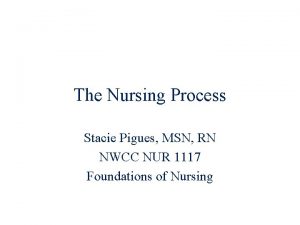


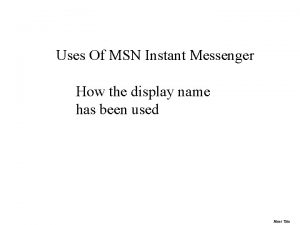
![Msn] Msn]](https://slidetodoc.com/wp-content/uploads/2020/12/3305482_b48b1a63b3813712ffceded1012692e7-300x225.jpg)
